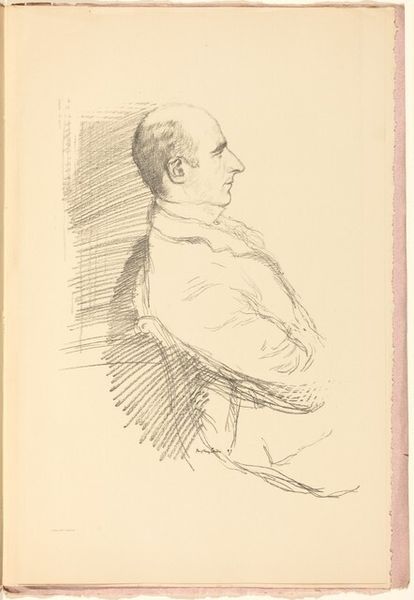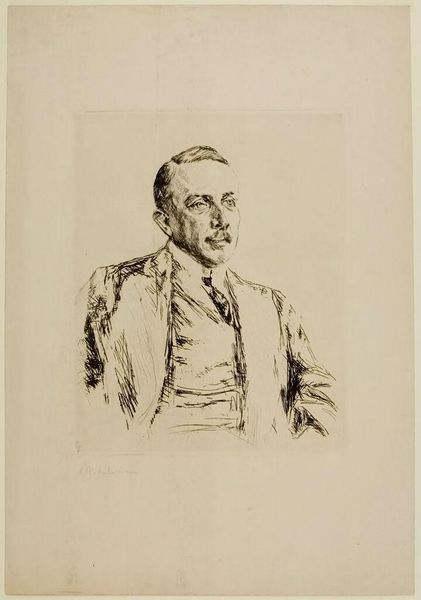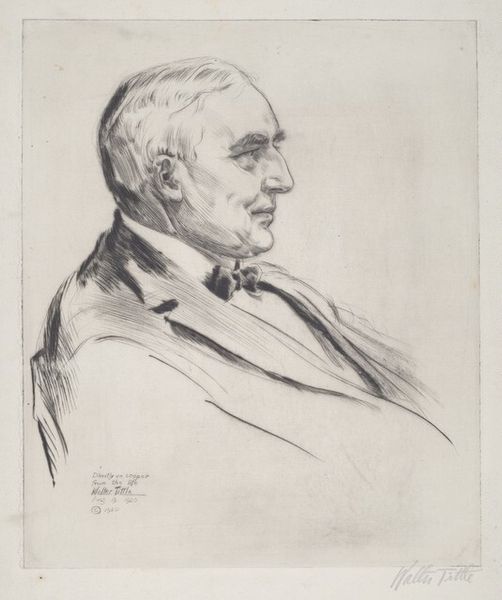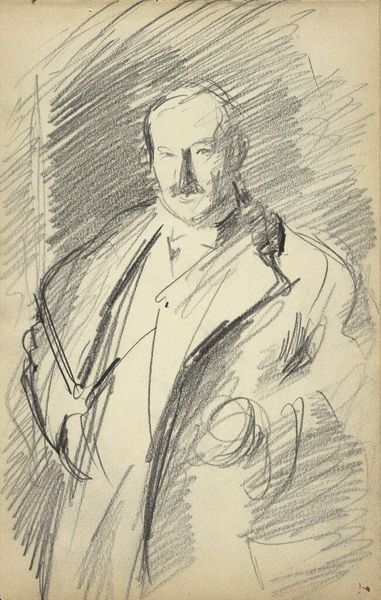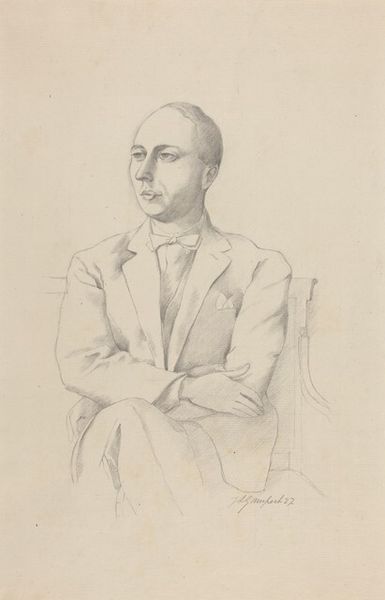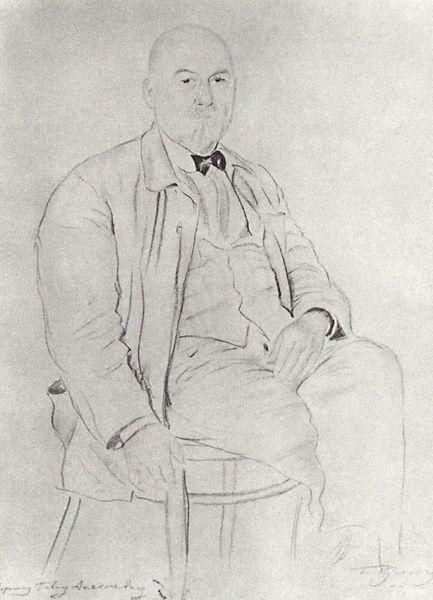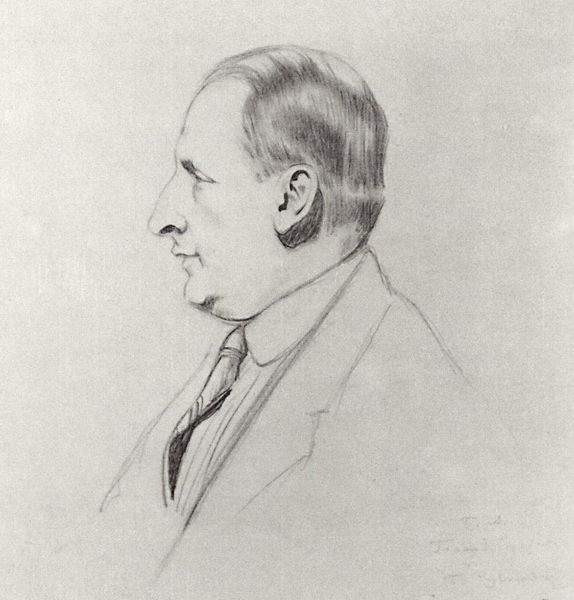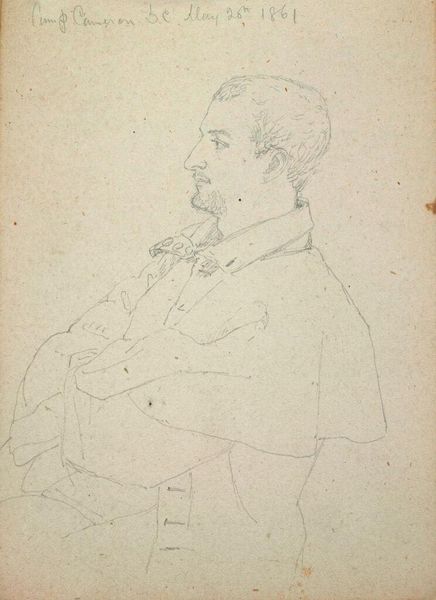
Portrait of Willard Parker, 1871 (from Sketchbook) 1870
0:00
0:00
drawing, pencil
#
portrait
#
drawing
#
pencil sketch
#
pencil drawing
#
pencil
#
academic-art
Dimensions: 5 1/2 x 8 3/4 in. (14 x 22.2 cm)
Copyright: Public Domain
Curator: There’s a stark, immediate presence about this portrait. It almost feels like you’ve caught someone deep in thought. Editor: That's Daniel Huntington's "Portrait of Willard Parker, 1871," a pencil sketch currently held at the Metropolitan Museum of Art. It's an interesting study, more so when you know Parker's reputation as a pioneering surgeon. Curator: Indeed! It's remarkable how Huntington uses these sparse, almost frantic pencil lines to convey such composure and authority. Look at the detail around the eyes—intense and knowing. The sketch seems to be an exercise in restrained power, don’t you think? Editor: Restrained perhaps by the medium, the fleeting nature of a sketch. But beyond the formal composition, I see Huntington contributing to the era's romanticizing of doctors, imbuing Parker with a sense of gravitas. Remember, 1871 was a time of enormous shifts in medicine and public health, and portraits like these were often used to elevate these figures in the public eye. Curator: That makes a lot of sense. Thinking about the lines again, their deliberate asymmetry. One arm is far more detailed than the other, as is one side of his face. Huntington skillfully draws our focus to the parts that define Parker’s character. What do you make of his somewhat disheveled attire? It suggests a man of action, someone more interested in his work than appearances. Editor: Possibly. It could also be interpreted as part of Huntington's strategy for portraying Parker as an accessible figure. A man of the people in some regards, not just some detached, godlike figure of science. Also notice how his slightly reclined posture, in an era that demanded the rigid pose, would send a signal to contemporary audiences. Curator: Yes, it is quite clear that, while it is informal and unfinished as a sketch, this piece still carries all the signifiers of class and social importance expected from a formal finished portrait. It highlights both the man's personal importance and that of the whole of his profession in contemporary society. I like your reading of that formal, seated portraiture against the gesture toward immediacy here. Editor: Well, by viewing beyond solely formal, visual composition here, and investigating some social and historical factors, hopefully, we provided some engaging perspective on the Huntington portrait. Curator: Indeed! A productive exploration into the nuances of both artist and subject!
Comments
No comments
Be the first to comment and join the conversation on the ultimate creative platform.
